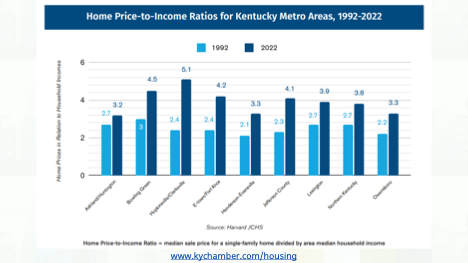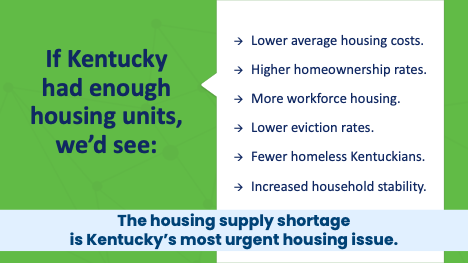The ARCH Community Health Coalition is working hard to address the fundamental challenges that our rural communities are facing (https://www.archcoalition.org) . Among those challenges is a housing problem, and we’re not just talking about sheltering the unhoused, although that is part of it. Our housing needs span the range from basic shelter to affordable rentals, to entry-level owner-occupied housing, to middle-class and workforce housing.

Housing, like all the other issues we are working on, is not simple. It’s a big, complex, long-term situation. There are no quick or easy fixes. We can’t just pick some housing-related project that we can complete in six months and post the pictures on our web site. A coat of paint or a new roof isn’t going to make much of a difference. We need more and better housing.
On the hierarchy of human needs, housing is one of the things, along with food, water, and clothing that are at the very foundation of the pyramid (see Maslow’s Hierarchy of Needs, below). If you are fortunate enough to have a roof over your head, the first payment you make every month is your rent or mortgage. If you lose your shelter, finding a place to stay is your first priority, because it’s almost impossible to do any of the other things you need to do in life if you don’t have a secure place to sleep.

Housing isn’t just a primary need for people. It’s a contributing factor to our quality of life, and a key determinant of our economic potential as a community. There is an excellent comment related to housing that says: “Housing is where jobs go to sleep at night”. If we want to build our workforce and a prosperous future for our rural communities, we have to build housing for them to live in.
As is usually the case, when you are trying to develop a strategy to do something, the first step is to figure out where things stand now so you can define the baseline conditions. Once you know where you are, you can begin to plan how to get to where you need to be. When you are working on housing, that first step is called a housing survey or a housing needs assessment. We have been trying for over a year to find the funding to pay for a housing needs assessment, with no luck. Fortunately, our housing situation is so dire, statewide, that the Kentucky Housing Corporation (KHC, the statewide agency that administers federal housing dollars) commissioned a housing gap analysis to be performed. A gap analysis isn’t a detailed needs assessment, but it provides an overall picture of how many of what type of housing units are available and, based on current and projected population and economic data, determines how many units are needed.
The report on the first two phases has been released, and the results are not good. They aren’t good for the state, as a whole, and they aren’t good for any of the counties in our region of rural western Kentucky. What’s worse is that the situation is projected to get considerably worse over the next five years.
Hopkins County is currently short 1566 housing units (including rental units and owner-occupied housing), meaning that we need that many units right now, just to have a healthy housing market for people at all levels of income. That number is predicted to grow to 2350 by 2029. Clearly, we have a great deal of work to do, and it’s not going to happen by accident. It’s going to happen by planning and execution, which is what the ARCH Coalition and our partners are working on.
However, our concern isn’t just Hopkins County. Hopkins County isn’t an island and our future, to a considerable degree, is linked, economically and socially to the other counties around us. The ARCH Community Health Coalition was founded to serve that region. We are all facing similar challenges and we are going to survive and thrive together, or not. Our intended service area is not cast in stone, but we are planning for a prosperous future for our region of western Kentucky. We have started out from Hopkins County, because that’s where we are, with the intent to also eventually serve the 10 or 12 rural counties that surround us. We’ve already started to work in Muhlenberg and Webster and we will expand into other counties in our region as our capacity to do so grows. We can only do what we have the people and the funding to do.
So, if we look at it from that regional perspective, we are currently 15646 housing units short. By 2029, that gap will increase to 18376. The housing gap is pretty evenly divided between owner-occupied housing and rental housing. Furthermore, each of those categories can be divided up by income level and, again, there is need for additional housing at all income levels. Unsurprisingly, the need is greatest at the low-income end for both rental and owner-occupied housing.
All these housing issues, like most of our other major socioeconomic challenges, didn’t just happen. There are many factors that have contributed to where we are, and they go back, in some cases, for decades. All of it, however, leads to one, inescapable conclusion: we do not have enough housing.
Well, why don’t we have enough housing? There are two big contributors there. One is that much of our housing stock is old. The majority of the housing in this area was built in the 60’s and 70’s, if not before, meaning they are 60+ years old. The other big factor is that, since the subprime housing mortgage bubble burst in 2008, leading us into a global recession, housing construction has yet to get back to where it was 30 years ago.

There are also multiple contributors to why the is less housing construction. One is that there are not enough tradespeople to build them. Another is that most of the construction that is done is at the high end, building the more expensive homes, because there is greater profit margin on expensive houses. Housing expense, in itself, is a factor. For example, in 1992, an average house in the Hopkinsville-Clarksville area cost approximately 2.4 times the area median income (AMI. AMI is where half the people in the workforce make more and half make less). In 2022, that cost had grown to 5.1 times AMI. Part of that was because wages, particularly blue-collar wages had been fairly stagnant over that period, and part is because housing got much more expensive.

options get more scarce, prices rise. When the availability goes down and prices go up at the lowest income end of the housing spectrum, there is nowhere for some people to go, and they lose any options and become homeless.
That quick and oversimplified explanation is so people can understand that we have to consider our entire housing market if we want to have a balanced, well-functioning market that can serve our entire population, now and moving forward. We NEED new low-income rental housing. We NEED new entry-level housing. We NEED new workforce housing, both rental and owned. We NEED more middle-class housing, again, both rental and owned.
So, to properly address our housing situation, we need to look at both availability and affordability, because the two are tightly linked. In Kentucky, in 2001, about 36% of renters were what is termed “cost burdened”. That means that they were spending more than 30% of their income on housing expenses (rent, utlilities, etc.). Nineteen percent were severely cost burdened, meaning that they spent more than 50% of their income on housing. The cost burden threshold was calculated based on overall cost of living. When an individual or family is cost burdened, it means that they are unlikely to have sufficient resources to pay for food, transportation, medical costs and all the other costs of living. Severely cost-burdened people are almost certainly doing without some of the things that are necessary to live a healthy life. By 2022, 44% of renters, which is getting close to half, were cost burdened and 24% were severely cost burdened.
